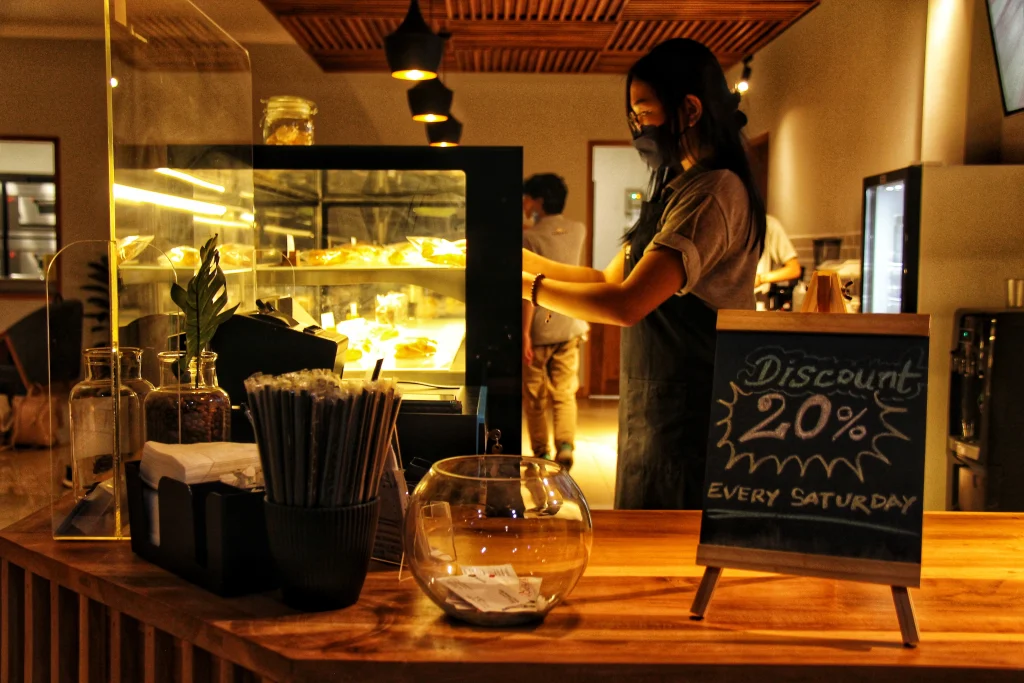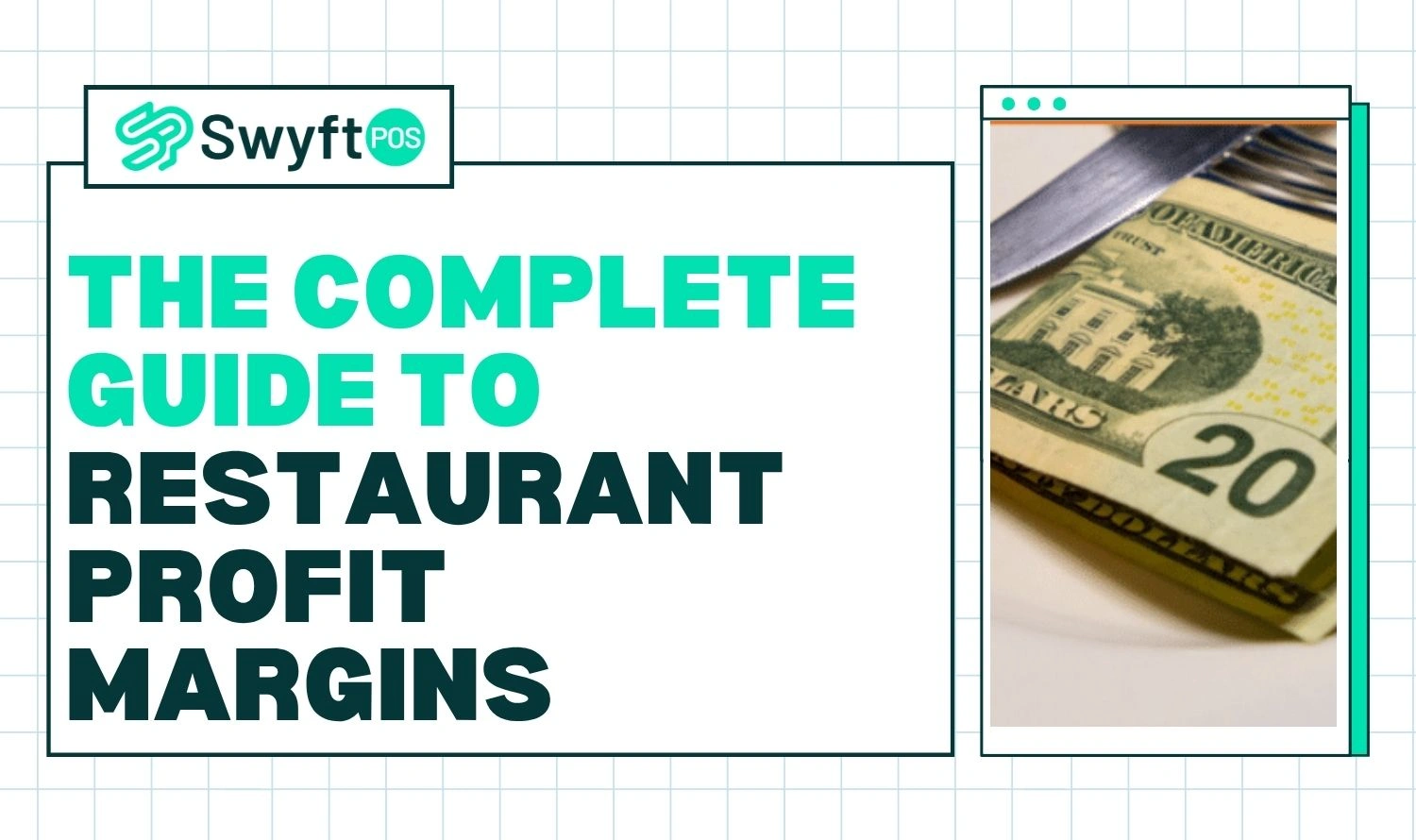Some nights, the dining room is packed. Glasses clink, laughter spills from the tables, and the kitchen smells like roasted garlic and caramelized onions. Orders fly in faster than hands can move, and somehow, everything stays under control. Other nights…the fryer sputters, the dishwasher floods, invoices stack up, and the air feels thick with worry. Margins — silent, invisible — decide whether the night ends in relief or a quiet panic.
Margins aren’t just numbers. They’re the story behind every plate served, every ingredient bought, every dollar earned or quietly lost. Understanding the importance of POS system in restaurant operations can help track these details accurately — because even a busy night can feel like losing money under the table if you’re not watching the numbers closely.
Restaurants survive because someone notices. Someone watches the numbers. Someone adjusts when the chicken spikes in price or when overtime sneaks in unnoticed. That someone could be the manager, the head chef, or the bookkeeper — the ones who truly understand the profit margins of restaurants and how small changes can make or break the bottom line.
Gross Margin v. Net Margin
Gross margin is simple — money left after paying for food. Nothing else. Sounds easy, right? But when you look deeper into the profit margins of restaurants, that 70% on paper can shrink fast once rent hits, staff hours rise, and the fridge breaks down. That’s when reality sets in.
Net margin is what actually stays in the bank. Every bill counts. Salaries. Rent. Utilities. Marketing. Even that emergency pest-control visit on a Tuesday. Net margin tells whether the restaurant is surviving or just appearing to. It also answers the common question: are restaurants profitable when margins are low?

Months with net margins under 5% are terrifying. Over 15%? That’s a miracle born of careful planning and a little luck. Most restaurants hover somewhere in between, chasing stability like it’s a moving target.
Step-by-Step Guide to Restaurant Profit Margins
Here is a complete guide to restaurant profit margin:
#1 Food Costs: The Quiet Thief
Food costs usually take up 25–35% of revenue, but numbers lie. Ingredients spoil. Prices fluctuate. Suppliers fail. One week, chicken costs more than expected. Next, local vegetables go on sale, almost as if to balance it out.
Observant restaurants shift the specials board. Seasonal produce replaces pricier items. Leftover sauces and roasted vegetables turn into midday soups or creative specials. Each decision is tiny, but together, they protect margins.
Example: Waste Management
Sometimes it’s as simple as noticing a small waste pile in the fridge. “Ah, that half-used tray of mushrooms could’ve been soup,” someone mutters, and suddenly, money is saved without anyone realizing.
#2 Labor Costs: The Invisible Drain
Staff keep the restaurant alive, but labor costs can quietly consume profits. Scheduling mismatches, unexpected callouts, overtime — all add up.
Smart restaurants are scheduled to meet demand. Cross-trained staff cover multiple stations. Overtime is watched closely.
Lesson Learned: Extra Hands Don’t Always Help
During a Friday dinner rush, an extra line cook was called in “just in case.” Orders flew fast, the dining room roared, but net margin dipped sharply that month.
#3 Overhead: Fixed but Flexible
Rent, utilities, insurance, marketing — these costs exist whether business booms or lags.
Savvy restaurants look for tweaks. LED lights replace old bulbs. HVAC cycles adjusted. Marketing spend is monitored carefully. Small changes, compounded over weeks, months, years, make a difference.
Pro Tip: Small Tweaks Matter
Sometimes the difference between a net margin of 7% and 10% is a single monthly utility adjustment. Chaos in the kitchen is one thing. Predictable overhead is another.
#4 Menu Pricing: Art and Strategy
Pricing isn’t math. It’s judgment, instinct, experimentation. Too low, and money evaporates. Too high, and diners walk out.
High-margin items get featured on menus with tempting descriptions. Popular dishes may be priced slightly higher, and portions adjusted carefully. Customers rarely notice small increases, but margins appreciate them.
Example: Menu Adjustment
One menu tweak: increase the price of a bestselling pasta dish by $1. Margins improve. Customers still order. Everyone wins.
#5 Location & Market
Location shapes opportunity. High-traffic areas justify higher prices, but rent bites deeper. Quiet streets save on overhead, but foot traffic is limited. Knowing the local market, competitors, and neighborhood preferences is crucial.
Even within a city, each block has its own character, spending habits, and quirks. Successful restaurants adapt menus and marketing to fit their corner of the world.
Pro Tip: Know Your Neighborhood
Observe local habits. Even small insights, like peak lunch hours or weekend foot traffic, can inform staffing and specials.
Real-life Margin Strategies
Margins aren’t rescued by magic. They improve through careful choices:
- Food waste monitored and repurposed
- Profitable menu items tracked and promoted
- Suppliers negotiated for bulk or alternative sourcing
- Labor scheduled efficiently
- Upsells and combos added to increase revenue per customer
- Technology leverages to reduce mistakes and save time
- Overhead adjusted wherever possible, from energy to marketing
Example: Tiny Adjustments
Sometimes it’s the leftover sauce turned into a soup that saves $50 for the week. Sometimes it’s the shift swap that prevents unnecessary overtime. Every decision counts.
Tracking Over Time
Margins fluctuate. Seasonal menus, market trends, and customer behavior all play a role.
- Monitor monthly and yearly performance.
- Track margins per menu item.
- Adjust portions, pricing, and staffing based on insights.

Spreadsheets are tedious, yes, but invaluable. Tracking every dish, even that tiny dessert garnish, reveals patterns that guide smarter decisions and ensures restaurants are profitable over time.
Common Mistakes
Here are some mistakes that restaurant owners often overlook:
- Ignoring ingredient price changes.
- Overstaffing or undertraining.
- Underpricing popular dishes.
- Allowing food spoilage.
- Avoiding technology that could save time and money.
Avoid these, and the restaurant can survive even unpredictable chaos.
Lessons from the Floor
Margins tell the story of a restaurant’s life: successes, mistakes, surprises, and small victories. Observing and adjusting costs ensures sustainability.
Even minor choices — switching suppliers, adjusting portion sizes, changing shift schedules — can accumulate into solid net margins. Knowing the restaurant profit margin allows operators to see whether restaurants are profitable regularly.
Closing Thoughts
Margins are the unglamorous truth behind every restaurant. They dictate whether the night ends with applause or frustration. Observing them, adjusting strategies, and managing costs is what separates thriving restaurants from struggling ones.
Profit margins may not be exciting to talk about, but they’re the clearest sign a restaurant is healthy and ready to weather whatever chaos the next dinner rush brings.
Take control of your restaurant’s financial health with Swyft POS. Our experts are here to increase profitability and streamline daily operations.
FAQs
1. What are restaurant profit margins, and why are they important?
Restaurant profit margins indicate how much revenue remains after covering costs. Tracking margins helps identify inefficiencies, optimize pricing, manage labor, and ensure the restaurant remains financially healthy over time.
2. How can Swyft POS help manage profit margins?
At Swyft POS, we help you track real-time sales, inventory, and labor. This data allows restaurant owners to see which items are profitable, adjust menus, and make informed decisions that protect and boost profit margins.
3. What strategies can restaurants use to improve margins?
Restaurants can reduce food waste, optimize menus, negotiate with suppliers, manage labor efficiently, adjust pricing, and leverage technology to monitor costs and increase operational efficiency.
4. How often should margins be tracked?
Margins should be monitored daily for individual items, weekly for departmental performance, and monthly for overall business health. Regular tracking ensures timely decisions and prevents hidden losses from accumulating.
5. What common mistakes reduce profit margins?
Ignoring ingredient cost fluctuations, overstaffing, underpricing popular items, letting food spoil, and avoiding POS technology can harm margins.





